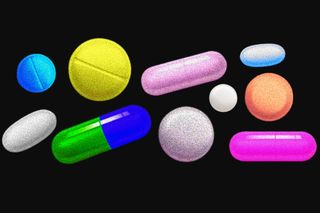
Indians Are Consuming High Volumes of Unapproved Antibiotics: Lancet Study
The study comes at a time when antibiotic resistance is a growing health crisis, indicating the need for strong monitoring systems.

Globally, India remains one of the biggest drivers of antibiotic resistance. India reported one of the highest sales volumes of antibiotics for a country in the period during 2018-20 according to some reports. The easy availability and over-prescription of antibiotics — even unapproved ones — have resulted in the development of antibiotic resistance. At times, antibiotic resistance may also render vaccines ineffective against some disease-causing microbes. The World Health Organisation (WHO) classifies growing antibiotic resistance as a “serious threat.”
A study published this month in The Lancet Regional Health – Southeast Asia now offers a picture of the causes and extent of this overuse in India. Based on an analysis of a privately-operated, nationally representative dataset of drug sales across India, the study makes use of WHO’s AWaRe (Access, Watch, Reserve) classification of drugs to examine the sale and consumption of antibiotics in the country. Watch and Reserve class of antibiotics are to be used sparingly as they are prone to drive antibiotic resistance. While the Watch class of antibiotics is to be prescribed for specific diseases in limited doses as a first or second choice, the Reserve class of antibiotics is meant to be the ‘last resort’ due to their very high probability of causing antibiotic resistance. But in India, they’re overprescribed — and worse, many unapproved formulations comprise a major part of Indians’ consumption.
While earlier studies have also focused on how Indians report one of the highest consumptions of antibiotics globally, they did not look into the classification of the drugs prescribed, and also did not look into the specificities, such as their approved status.
The researchers drew interpretations based on three categories: unapproved versus approved drugs, single formulations versus Fixed Dose Combination drugs (FDCs), and drugs listed on India’s National List of Essential Medicines (NLEM) versus those not listed.
A study of Indian drug markets during the period between 2007 and 2012 found that a considerable proportion of antibiotics on sale were unapproved by the Central Drugs Standard Control Organization — the national drug regulatory body. In India, FDCs — combinations of multiple drug formulations into one dose — are commonly prescribed against diseases like tuberculosis and leprosy where there is a need to combat multiple bacteria. However, the increasing use of FDCs may result in growing resistance against multiple antibiotics, and relying on pre-made combinations can result in either overdosing or underdosing of the different components that make up the combination. Hence, the scientists chose to categorize their data along these parameters.
Related on The Swaddle:
Scientists Find New Way To Fight Antibiotic Resistance in Dangerous Bacteria
The present study, on analyzing the data found that in 2019, Indians consumed 5,071 million Defined Daily Doses (DDD) — a standardized measurement unit for drugs — of antibiotics. Per day, this translates to 10.4 DDD per 1,000 population. The researchers further discovered that the “Watch” class of antibiotics — antibiotics with higher resistance potential, often prescribed as a second choice drug — made up 54.9% of all the DDDs.
On categorizing the drugs based on their approval for use, researchers observed that unapproved drugs contributed to almost half of the DDDs. ‘Watch’ antibiotics made up more than 72% of the unapproved drugs sold. FDCs contributed 34% of DDDs, and within them, those combinations discouraged by the WHO made up almost half of the total drugs sold.
The high number of DDDs from unapproved and discouraged drugs points to the lack of proper monitoring infrastructure for antibiotic sale and consumption in India. Most antibiotics in India are sold over the counter, without the requirement of a prescription. Earlier reports have looked at how unapproved antibiotic combinations freely operate in Indian markets. Health researchers have also complained that the Indian government isn’t doing enough to curb the sale of unapproved drugs and drug combinations. In 2020, even the US drug regulatory authorities wrote to the Indian government expressing concern that these unapproved drugs may be driving up global antibiotic resistance.
One way in which unapproved drugs are able to bypass these regulations, the scientists write in their paper, is through the existence of multiple regulatory authorities. The researchers explain in their study that “in India, the drug regulatory responsibilities are distributed between the Central Drugs Standard Control Organization (CDSCO)…under the national government and the State Drug Regulatory Authorities (SDRAs) under the respective state governments. This means each Indian state can provide market approval even without CDSCO approval.”
Interestingly, the most widely used antibiotic formulation in India in 2019 according to the study was azithromycin. During the Covid19 pandemic — that took place within the study’s timeline — the drug, along with a couple of other antibiotic formulations, was recommended as a miracle remedy for mild Covid19.
The study comes at a time when antibiotic resistance is a growing cause of concern, with some studies even pointing to how it is causing death among newborn babies. Although earlier studies have also looked at the overuse of antibiotics in India, the current study’s use of the AWaRe model and analysis of approved and unapproved drug consumption percentages can help understand the full extent of the situation. The results of the study indicate that there is an urgent need for strong monitoring systems on antibiotic consumption.
Amlan Sarkar is a staff writer at TheSwaddle. He writes about the intersection between pop culture and politics. You can reach him on Instagram @amlansarkr.
Related


Cancers Before the Age of 50 on the Rise Globally, Study Warns
